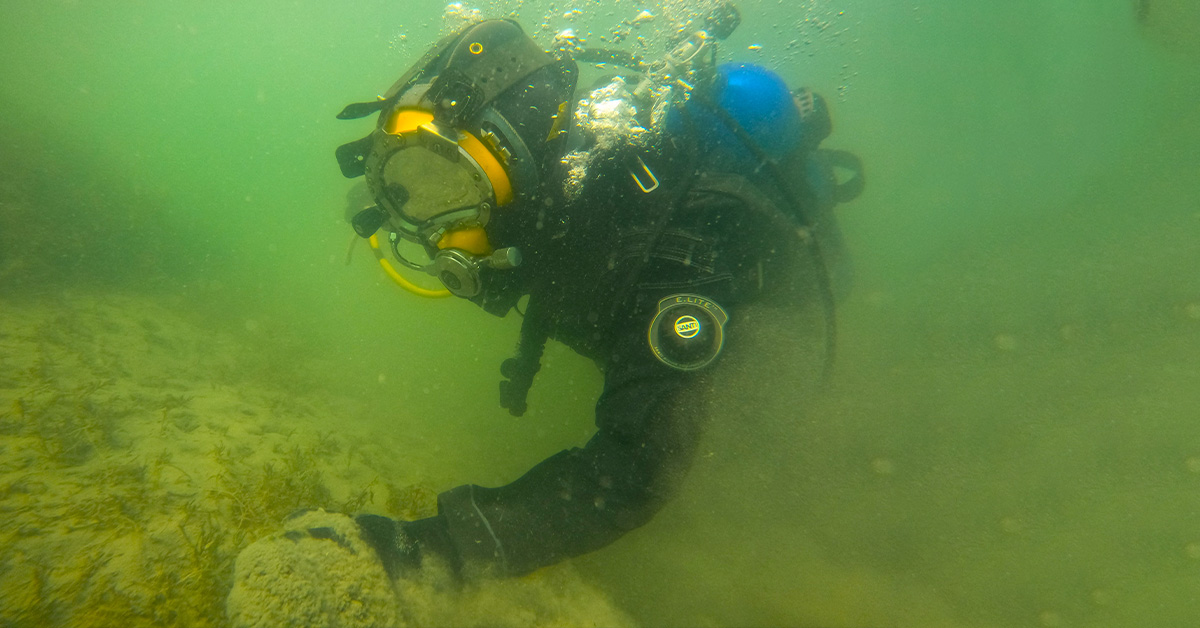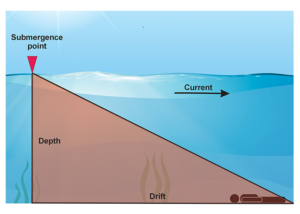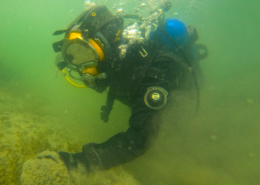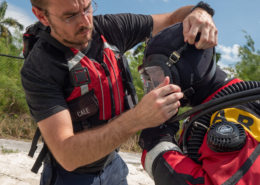Where to search? Search Theory and Public Safety Diving
By Rafael López
ERDI/SDI Instructor #18006
Determining where to search is one of the most critical aspects of search planning. Typically, the training of Public Safety Divers focuses on honing the necessary skills for the search itself, often overlooking the equally important task of selecting the search area. While ground Search and Rescue (SAR) groups receive comprehensive training in search theory from the onset of their programs, the PSD community tends to be less acquainted with this essential aspect.
A Brief History of Search Theory
The foundation of search theory lies in the mathematical application of Bayesian statistics. In 1968, the USS Scorpion submarine went missing, prompting the U.S. Navy to apply this method for its recovery (Richardson and Stone, 1971). Subsequent works, notably Koester’s (2008) “Lost Person Behavior: A Search and Rescue Guide on Where to Look for Land, Air, and Water,” further developed and applied this theory within SAR groups.
Some Theoretical Bases
Before you run away thinking this involves complex mathematical formulas, fear not! It’s crucial to grasp that search operations are inherently probabilistic; you either find the object (1) or you don’t (0). Success in a search hinges on two variables: the probability of detection and the probability of containment. In simple terms, you find an object if it’s within the search area and can be detected. The formula succinctly represents this as:
POS=POD×POC
Now Let’s Delve into Search Planning for Public Safety
In search planning, the goal is to maximize the likelihood of finding the object in the least amount of time and resources. To achieve this, initiate the search in the area with the highest probability of containing the object (the second part of the formula). Every PSD diver is familiar with terms like Point Last Seen (PLS) or Last Known Position (LKP) and the derived Initial Planning Point (IPP).
Once you’ve established the Initial Planning Point, a critical question arises: How far is the body from the IPP? Several studies in the literature provide statistics essential for planning.
The human body’s sink rate is approximately 1.5 ft/sec in saltwater and 2-2.5 ft/sec in freshwater (Koester, 2008), with a good approximation being 2 ft/sec (Hendrick, W., and Zaferes, 2000).
In the absence of a current, the radius of the search area equals the depth for a 95-99% probability.
But what about moving waters?
Once a body settles at the bottom, it typically remains in that position until gasses refloat it, unless extreme currents or shallow waters intervene. Reports indicate bodies at the bottom with currents of 10-15 knots in the Niagara River (Hendrick, W., & Zaferes, 2000). Hendrick, W., and Zaferes (2000) devised a straightforward formula to calculate where a body will touch the bottom in current waters:
Drift (feet)=Depth (feet)×Current (feet/second)/2
Numerous factors come into play when planning an underwater search, but the hope is that this post proves beneficial for your next mission!
REFERENCES
Hendrick, Hendrick, W., & Zaferes, A. (2000). Public safety diving. PennWell Books.
Koester, R. J. (2008). Lost Person Behavior: A Search and Rescue. dbs Productions LLC.
Richardson, H. R., & Stone, L. D. (1971). Operations analysis during the underwater search for Scorpion. Naval Research Logistics Quarterly, 18(2), 141-157.
Learn more about search theory in an ERDI course.
Rafael López is an ERDI diver and founder of Search Rescue Training.
As an SDI TDI & Scubility IT, Dan Phutthakhun Prungkananon, owner of All Star Diving Academy located in Thailand, has a deep-rooted passion for ensuring safety and fun in the water. Keep up with Rafael and the SAR Training via his Instagram or Facebook and the SAR Training by checking out their website, Facebook, and Instagram




 Photo By: Defense Visual Information Distribution Service
Photo By: Defense Visual Information Distribution Service


 Y. ZIN
Y. ZIN


Hinterlasse einen Kommentar
An der Diskussion beteiligen?Hinterlasse uns deinen Kommentar!